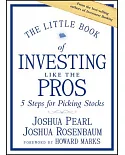Following on the heels of the devastating Asian Contagion of 1997, Korea went through a painful restructuring process and adopted a new international policy framework based on prescriptions
for enhancing macroeconomic performance under free capital mobility. The country also accumulated a huge amount of foreign exchange reserves. Yet in spite of these efforts, Korean capital
markets suffered tremendous turmoil during the global financial crisis.
Volatility in Korean Capital Markets summarizes the Korean experience of volatile capital flows, analyzes the economic consequences, evaluates the policy measures adopted, and suggests new
measures for the future. This edited collection examines how volatile capital flows have affected the macro economy and financial markets in Korea. The editors evaluate key crisis prevention
policies adopted before the global financial crisis and discuss problems in the FX swap and cross-currency swap markets. This cutting-edge work features two of the macro-prudential measures
adopted in recent years, and suggests long-term indicators for improving the resilience of the Korean financial system.





















